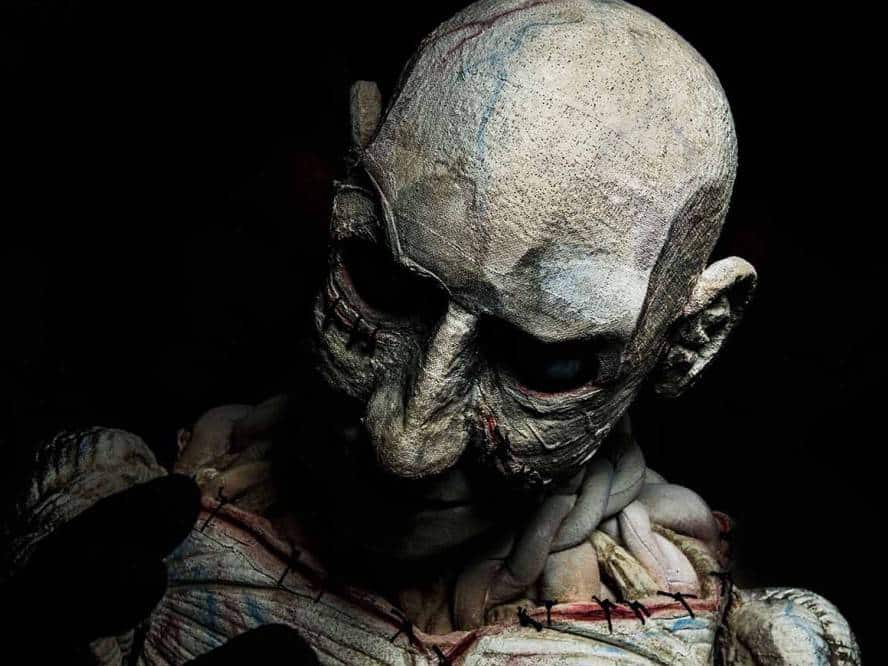What enticed you to take on Frankenstein?
I didn’t need much enticing to be fair. Adrian McDougall, the Artistic Director of Blackeyed Theatre, approached me with the idea and I jumped at the chance to do it! I knew the novel well and really loved it. It’s a cracking, gripping, classic story that has stood the test of time, and when you are presented with an opportunity to have a go at something like that you have to grasp it with both hands. I had directed Dracula for the company a couple of years previously and really enjoyed trying to meet the challenges that the Gothic horror genre presented.
What are the main tasks and challenges in directing this?
Five performers tell the story and it’s a busy show for them. We’ve been quite ambitious with the vision for this piece with the inclusion of live music and sound as well as the challenge of puppeteering a 6ft 4in Japanese Bunraku-style creature, so just getting the show up and ready in the short rehearsal time was challenging. But going for a bold form of storytelling focused on the actors’ ability to transform is the right way to go.
What’s the vision, and what do you hope to achieve in terms of theatrical style?
One of my touchstones for this piece was that the structure of the novel takes the form of a story containing other stories within it. We start with Captain Robert Walton’s story, recounting his journey to the North Pole where he meets an exhausted, half-dead Frankenstein.
He, in turn, proceeds to tell the story of his life, and within that story we find another story – the Creature’s story.
This Russian doll-style structure sparked my imagination. For me, Frankenstein suddenly felt like a dark Gothic fairy tale with a nightmarish and dream-like quality that seemed to flow from this.
Why did you cast the Creature as a puppet?
We set the play on the ship upon which Frankenstein clambers aboard, as that is the only thing that we know to be real, and the materials and crated furniture he finds there become what he uses, and we use theatrically, to help to tell his story.
The Creature too, therefore, has elements and accents of the ship; of cloth and rope and sack and stiches.
It is something that has literally been brought to life by Frankenstein as if wrenched from the set. For me, the beauty and excitement of theatre is that it is live, unfolding in front of you as you watch, and having the Creature as a life-sized Bunraku-style puppet seemed to fit perfectly with this approach.
Frankenstein is obsessed with finding the spark of creation and bringing to life dead matter. I hope that we mirror this by bringing the Creature to life theatrically, animating and manipulating the puppet in front of the audience, giving them the illusion that it has a life of its own.
It seemed to me to be a lovely theatrical metaphor for the act of creation in the story and I hope audiences embrace it.
What else can the audience expect from this production?
A show that celebrates the excitement of live theatre using inventive, bold storytelling to bring Mary Shelley’s dark Gothic thriller to life using puppetry, live music and sound, and utilising all the skills and abilities that our company of five performers possess.
If audiences leave the theatre excited and entertained by what they’ve seen as well as being moved and challenged by the complex moral questions that this tale provokes, I’d be delighted.
Tickets cost £15. To book, visit www.tonbridgearts.com








